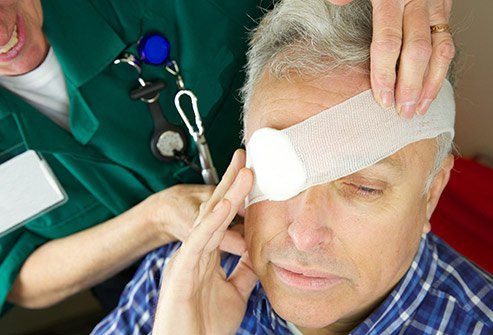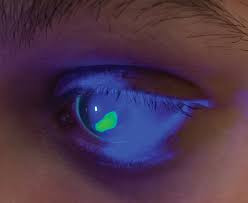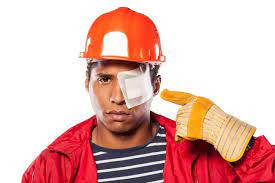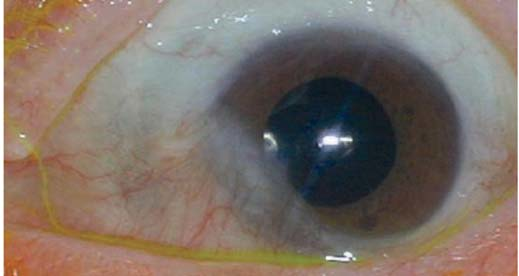Definition
Corneal injury or trauma refers to any injury to the cornea of the eye. The cornea is a transparent layer that covers the iris and functions as a refractive medium for vision. Corneal injury is categorized into two types: abrasion and erosion.
Corneal abrasion involves a scratch on the cornea, while corneal erosion occurs when the outer layer of the cornea separates from the underlying layer. Such trauma typically results in blurred vision. Corneal injury can affect individuals of any age, gender, or race and accounts for approximately 10% of all eye emergencies.
Causes
While corneal abrasions and erosions share similar symptoms, their causes differ. Corneal abrasions usually result from the cornea being scratched by nails, facial makeup brushes, tree branches, and other objects; even rubbing one's eyes can lead to an abrasion. Conversely, corneal erosion often occurs unknowingly, such as upon waking up. The Risk Factors section will discuss the various elements that increase the likelihood of corneal erosion.
Corneal injury induces pain disproportionate to its small size due to the high density of pain nerve endings in the cornea, which exceeds that of the skin. These nerves transmit signals to the brain, indicating potential surface damage.
Risk Factor
The likelihood of corneal abrasion increases with risk factors such as trichiasis (inward-growing eyelashes) or high exposure to chemicals or metals in the workplace. Corneal erosion risk factors include dry eyes, incomplete eyelid closure during sleep, improper contact lens fit or hygiene, and corneal diseases. Generally, the risk of corneal injury escalates with eye infections like keratitis (corneal inflammation) and neurological diseases that affect the eye nerves, such as ophthalmic herpes zoster (shingles).
Symptoms
Typical symptoms of corneal injury include:
- Burning sensation in the eyes
- Red and watery eyes
- Eye pain
- Blurred vision
- Light sensitivity
Pain may be present even when the eyes are still and can intensify with blinking or eye movement. Corneal abrasion symptoms often follow activities that pose a trauma risk, such as working with metal, gardening, or motorcycling. Corneal erosion symptoms can appear suddenly upon waking, particularly if the eyelids were not fully closed during sleep.
Diagnosis
Diagnosis of corneal injury involves the doctor inquiring about the patient's occupation, the chronology of events causing the injury, and medical history to identify potential risk factors. Additionally, the doctor will conduct several examinations related to vision function and direct eye inspection. Vision function assessment includes visual acuity and visual field examinations. The direct eye examination may use fluorescein or dye to highlight corneal damage, which is then observed with a slit lamp.
Management
The management of corneal injury varies based on the cause, size, and other characteristics of the injury, as well as patient preference and compliance. Key considerations for treating corneal injury include:
- Avoid rubbing the eyes, as this can impede healing or exacerbate the injury.
- Refrain from using regular contact lenses during treatment to prevent slowing the healing process or worsening the injury. Consult your doctor regarding when it is safe to resume contact lens use.
For minor injuries, the wound may heal without special treatment, though doctors may prescribe antibiotic drops or ointments to prevent infection. For larger wounds, antibiotics are typically administered, along with special contact lenses or an eye patch to prevent the wound from expanding. These special lenses can alleviate pain and speed up the healing process. Additionally, doctors may prescribe artificial tears to protect the cornea and reduce eye pain, as well as eye drops to dilate the pupil for pain relief. Small corneal abrasions generally heal within 1-2 days, while larger abrasions may take about a week to heal.
Corneal erosion treatment is similar to abrasion treatment but may differ if erosion occurs repeatedly, more than two times. In cases of recurrent erosion, surgical intervention might be considered to remove corneal tissue or bond the epithelial layer to the underlying layer.
Complications
Complications arising from corneal injury predominantly affect vision. Scars may form on the cornea, impairing the light refraction necessary for clear vision. Recurrent corneal erosion can occur due to imperfect adhesion of the corneal layers. Additional complications include secondary glaucoma, which results from increased intraocular pressure due to disrupted fluid flow, and traumatic cataracts, which are cataracts induced by blunt or puncture injuries to the lens. Furthermore, corneal injury can lead to retinal detachment, where the retinal layer separates from the underlying tissue. In severe cases, corneal injury can result in blindness.
Prevention
Preventing corneal injury involves mitigating existing risk factors through the following measures:
- Use safety glasses or other eye protection during activities such as hoeing a garden, pruning the bushes, and cutting wood or metal.
- Wear a helmet with a face shield when riding a motorcycle to protect against airborne particles or debris.
- Utilize eye protection during sports involving balls or shuttlecocks.
- Regularly trim nails to prevent accidental eye injury from rubbing.
- Exercise caution when applying makeup, particularly around the eyes, as brushes and artificial eyelashes can cause trauma.
- Adhere to recommended contact lens care guidelines, as improper use can lead to corneal injury.
When to See a Doctor?
Immediate medical attention is recommended if an object enters the eye, resulting in blurred vision and pain, or if one wakes up with significantly blurrier vision and pain. In children, signs of corneal injury include red and watery eyes, light sensitivity, and reluctance to open their eyes. Older children may report blurred vision and a sensation of a foreign body in their eyes. These symptoms necessitate a doctor's visit to assess the extent of the injury and determine appropriate treatment.
Looking for more information about other diseases? Click here!
- dr Ayu Munawaroh, MKK
Boyd, K. (2021). Corneal Abrasion and Erosion. Retrieved 19 October 2021, from https://www.aao.org/eye-health/diseases/what-is-corneal-abrasion.
Logan, S. (2020). Corneal Abrasions (for Parents) - Nemours Kidshealth. Retrieved 19 October 2021, from https://kidshealth.org/en/parents/corneal-abrasions.html.
Queen, J., Bernfeld, E., & Ortiz-Morales, G. (2021). Corneal Epithelial Defect - EyeWiki. Retrieved 19 October 2021, from https://eyewiki.aao.org/Corneal_Epithelial_Defect.
Willmann, D., Fu, L., & Melanson, S. (2021). Corneal Injury. Retrieved 19 October 2021, from https://www.ncbi.nlm.nih.gov/books/NBK459283/.











